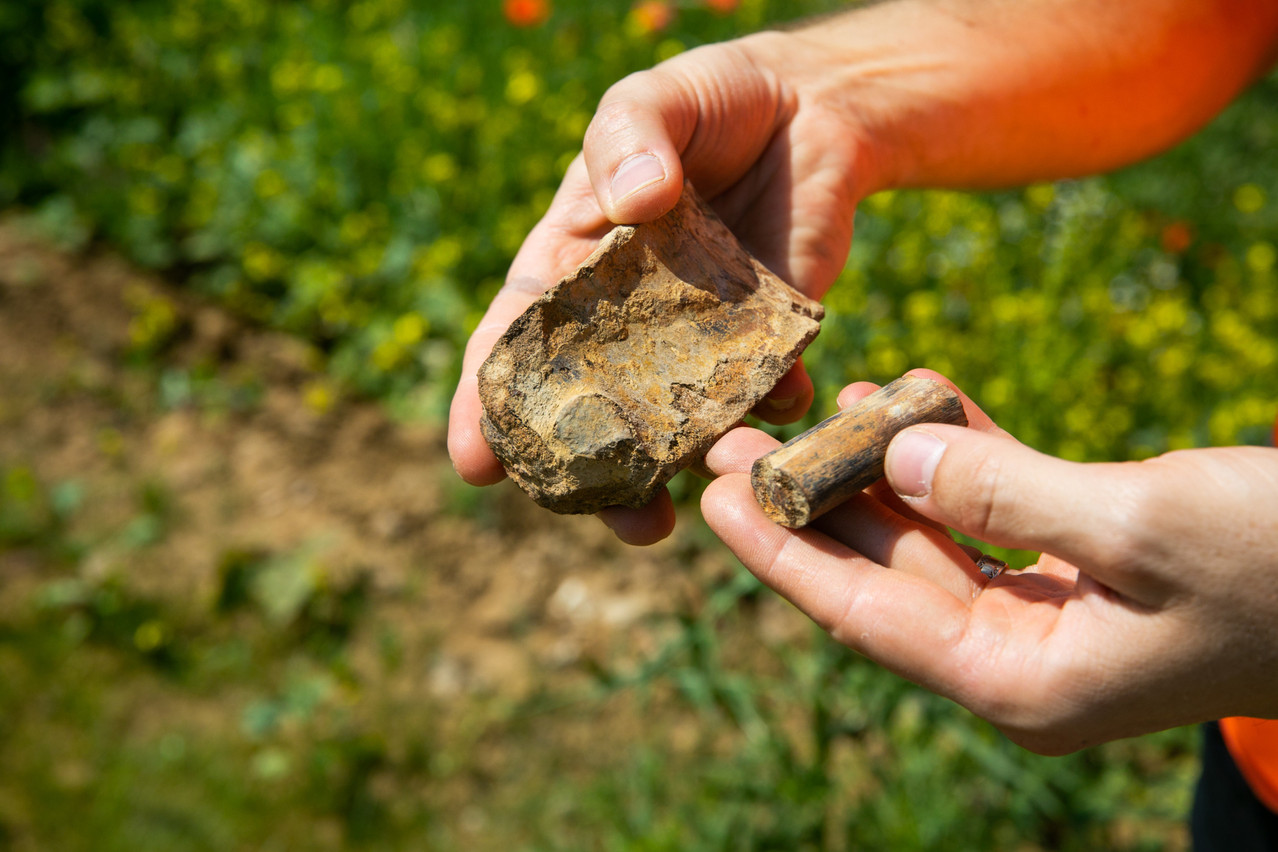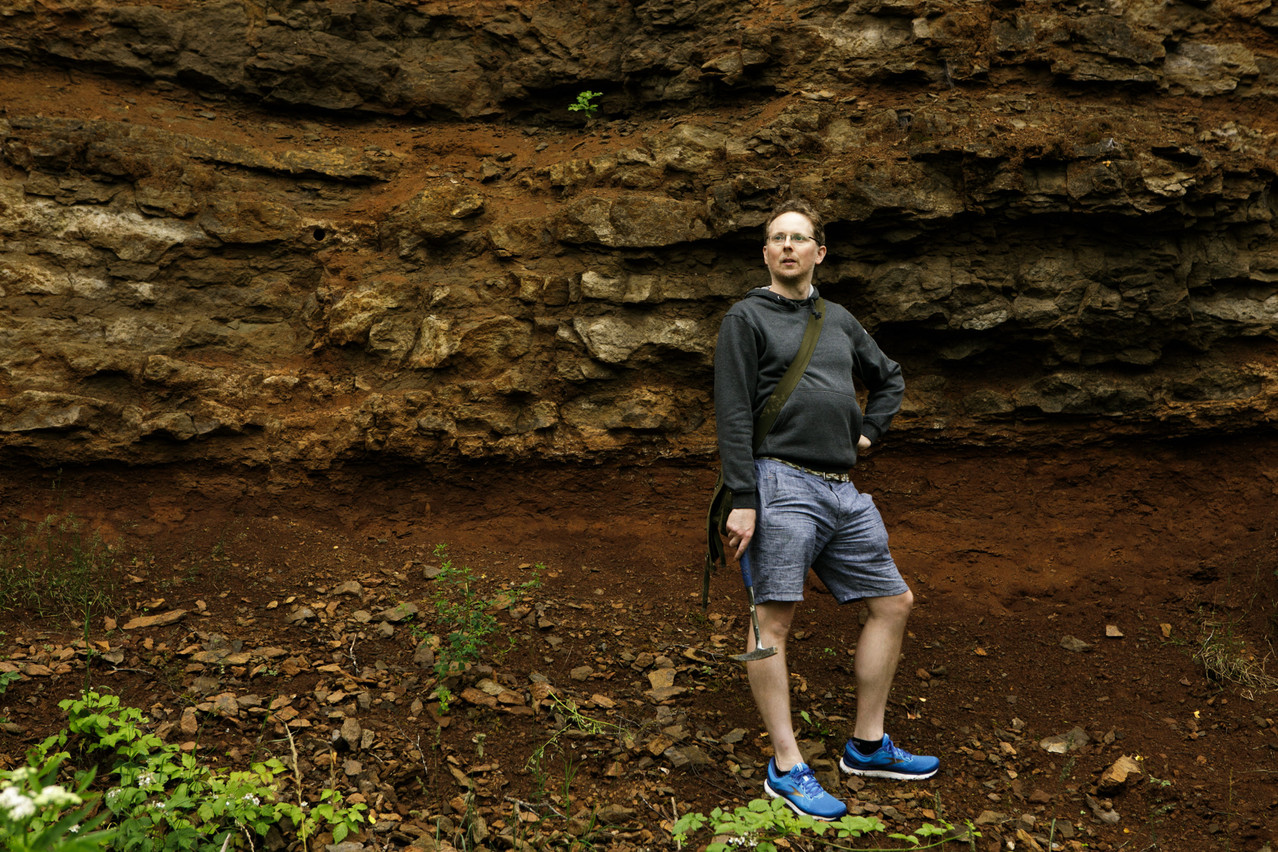“We always say there’s nothing left to discover on this planet, because everything has been discovered. But it’s not true,” says Robert Weis, geologist and collection manager for the paleontological department of the Luxembourg natural history museum. We’re walking in the woods at Ellergronn, a former mining site and nature reserve in Esch-sur-Alzette. It is a week before Richard Branson’s Virgin Galactic will launch its first space tourism flight.
For Weis, a walk in the Minett region, as the industrial south is known, is as fascinating as a journey into unknown worlds. “I see with the eyes of a geologist… I think which layer of rock are we standing on? How old is this layer and how did it form?”
Landscape formed by humans
He explains that the Ellergronn we are walking through is a young landscape: “It was shaped by man. Fifty years ago there was nothing here. It was like the moon,” he says, pausing by a small pond where the chirp of a solitary frog completes the soundscape of birdsong and buzzing insect life. “It’s very interesting because men destroyed everything. But destroying everything enabled even greater diversity.” He pauses, and adds as an afterthought: “It’s maybe not the best lesson to give children.”
Before the area was exploited for iron, the landscape was underwater, as was most of the south of Luxembourg. A reminder of this came earlier in the summer when a citizen scientist found the fossilised bones and a fragment of tooth from a , a new district that is rising from agricultural land on the edge of the capital. “It wasn’t that deep […] the bones were exposed because of the rain,” says Weis. While not complete, it was an incredible find given how rare specimens from this time period are. “Actually we find a lot [of fossils] and are constantly publishing new material from Luxembourg.”

A man holds the fossilised remains of a 190-million-year-old Ichthyosaurus in Cloche d’Or in June 2021 Matic Zorman / Maison Moderne
Minett Man and Biosphere
This is because Luxembourg was at the edge of the Paris sea basin where there was a diverse mix of habitats attracting different species. “We have a lot of sand and sediment coming from the land masses that can bury their bones and the remains of these animals so they remain in good condition,” he says. It was by the gushing monsoon rivers in the exposed part of what was then northern Luxembourg that iron sediment was carried to the shallower basin edge in the south of the grand duchy forming rich red seams that would later generate the country’s wealth, Weis explains. Despite the paleontological finds by Weis and his colleagues, he suspects that a lot of fossils are destroyed “during construction because you don’t see it, or you don’t recognise it or people don’t call us.”
This explains why Weis was part of the working group that prepared the application for the Minett region to receive Unesco Man and Biosphere recognition. The label which was granted in 2020 recognises the promotion of citizen-led conservation of biodiversity and sustainable development.
Weis grew up in Dudelange, a southern commune covered by the label whose Haard nature reserve counts 500 butterfly species and 45 species or subspecies of orchid, which he spent his childhood photographing. For him the label means greater exposure and more resources to protect the area’s biodiversity. “We need it because our population is growing, environmental issues are growing, biodiversity loss cannot be stopped, not by a Minett Biosphere or by a national park status,” he says.
Geographic travel book
For him, the label is about the interaction between man and nature, one he hopes to nurture through a number of initiatives, starting in the summer with a collaboration with Italian geopoet David Sapienza. The two will hike the soon-to-be-launched Unesco Biosphere trail, and host a with young scientists, the results of which will be compiled into a “geographic travel book”.
Back at the museum, meanwhile, Weis and his team are working on a new exhibition called “The Lost Ocean”, examining the sea monsters and other organisms living in Luxembourg during Jurassic times. The exhibition, which uses virtual reality as a storytelling tool for the first time, opens at the in October 2021.
